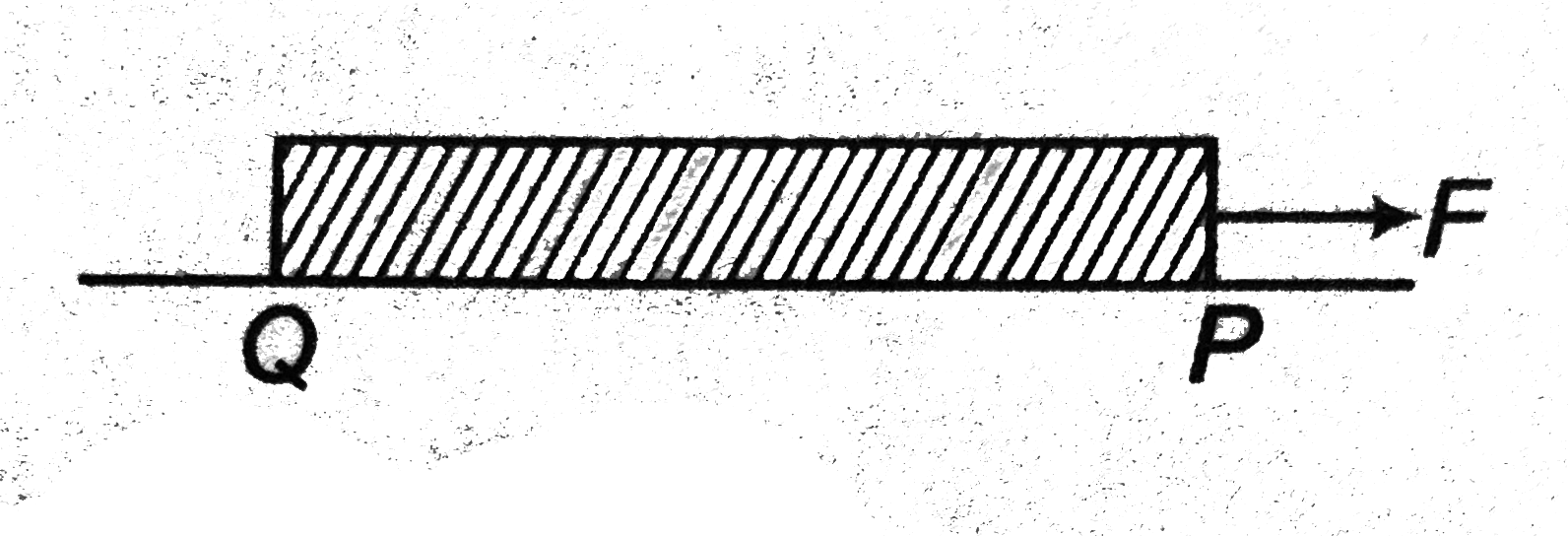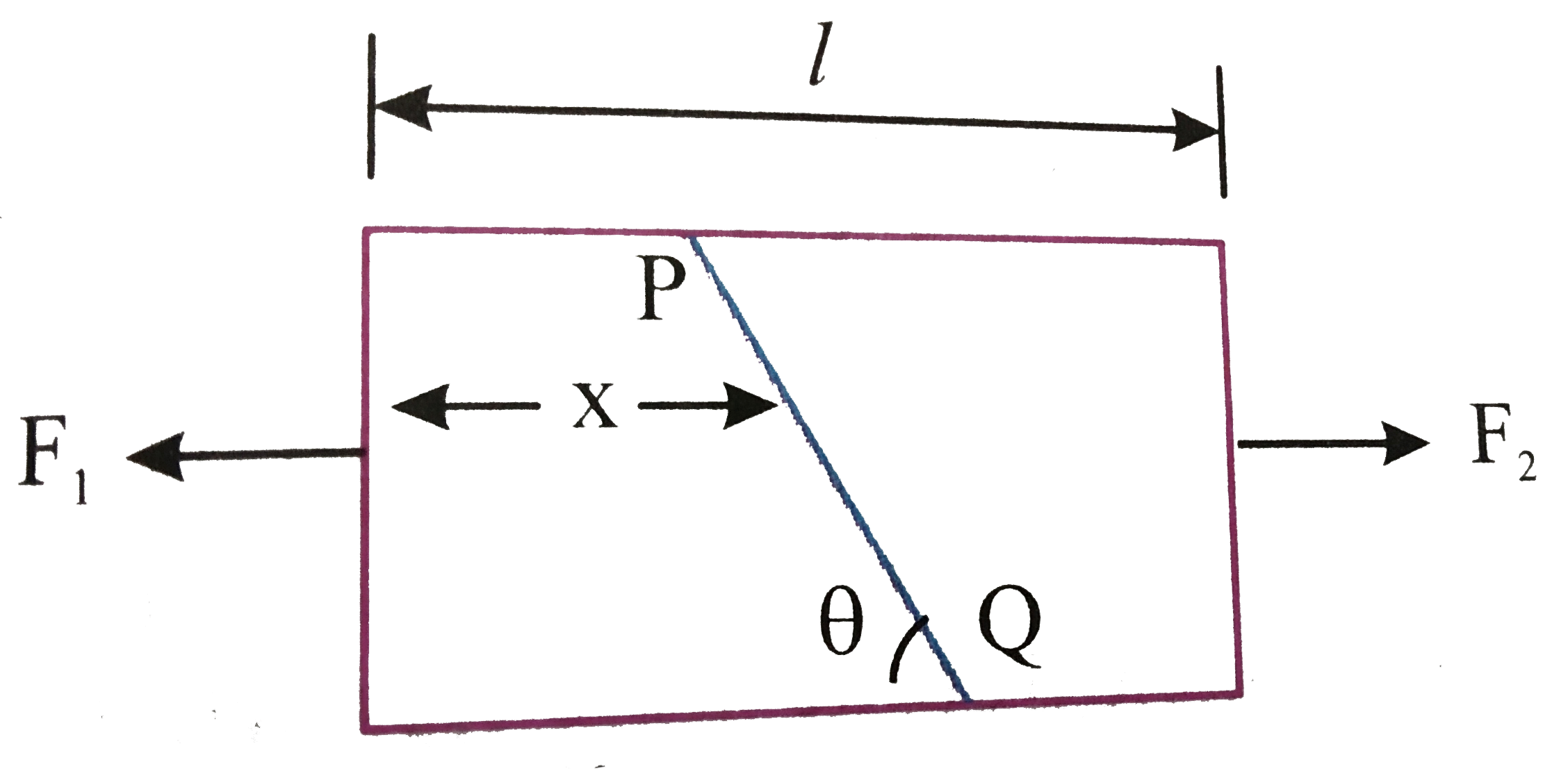Longitudinal stress .
The normal of longitudinal stress is defined as the force per unit area of cross section applied to each end of a rod or wire to change its length , i.e., to extend or compress it linearly .
Topper's Solved these Questions
- DEFINITIONSBOOK - NAVNEET PUBLICATION - MAHARASHTRA BOARDCHAPTER - DEFINITIONSEXERCISE - SURFACE TENSION
5 Videos
- DEFINITIONSBOOK - NAVNEET PUBLICATION - MAHARASHTRA BOARDCHAPTER - DEFINITIONSEXERCISE - WAVE MOTION
7 Videos
- DEFINITIONSBOOK - NAVNEET PUBLICATION - MAHARASHTRA BOARDCHAPTER - DEFINITIONSEXERCISE - OSCILLATION
8 Videos
- DERIVATIONS-IBOOK - NAVNEET PUBLICATION - MAHARASHTRA BOARDCHAPTER - DERIVATIONS-IEXERCISE - Assignments
9 Videos
Similar Questions
A rod PQ of mass, area of cross section A, length l and young's modulus of elasticity Y is lying on a smooth table as shown in figure. A force F is applied at P. Find
(a) tension at a distance x from end P,
(b) longitudinal stress at this point,
(c) total change in length and
(d) total strain the rod.
View SolutionThe fundamental frequency ofa 1.5 m long, stretched steel wire is 175 Hz. The density of steel is 7.8×103kg/m3.(i) Find the speed of transverse waves in the wire.
(ii) Calculate the longitudinal stress ofthe wire,
(iii) Ifthe tension in the wire is increased by 3%, calculate the percentage change in the frequency ofthe wire.
View Solution
Knowledge Check
Two forces F1 and F2 are applied at the ends of a metal rod of Yougn's Modulus Y, length l as shown.

Longitudinal stress at the given cross-section PQ if the cross-section of the rod is A0 and tension is TATsin2θA0BTsinθA0CTsinθ2A0D2Tsinθ2A0In the figure shown, A and B are two short steel rods each of cross-sectional area 5cm2. The lower ends of A and B are welded to a fixed plate CD. The upper end of A is welded to the L-shaped piece EFG, which can slide without friction on upper end of B. A horizontal pull of 1200N is exerted at G as shown. Neglect the weight of EFG.

Longitudinal stress in B isAtensile in nature and having magnitude 180N/cm2Btensile in nature and having magnitude 240N/cm2Ccompressive in nature and having magnitude 180N/cm2Dcompressive in nature and having magnitude 240N/cm2In the figure shown, A and B are two short steel rods each of cross-sectional area 5cm2. The lower ends of A and B are welded to a fixed plate CD. The upper end of A is welded to the L-shaped piece EFG, which can slide without friction on upper end of B. A horizontal pull of 1200N is exerted at G as shown. Neglect the weight of EFG.

Longitudinal stress in A isAtensile in nature and having magnitude 180N/m2Btensile in nature and having magnitude 240N/m2Ccompressive in nature and having magnitude 180N/m2Dcompressive in nature and having magnitude 240N/m2
A steel wire of length 1m and density 8000kg/m3 is stretched tightly between two rigid supports . When vibrating in its fundamental mode , its frequency is 200Hz.
a. What is the velocity of transverse wave along this wire ?
b. What is the longitudinal stress in the wire ?
c. If the maximum acceleration of the wire is 880m/s2, what is the amplitude of vibration at the midpoint ?
View SolutionLongitudinal strain.
View SolutionMatch the following columns.
Column IColumn II(A)Longitudinal stress(p)Volume changes(B)Shear stress(q)Shape change(C)Volumetric stress(r)Volume does not changes(D)Tensile stress(s)Shapes does not change
View SolutionA metal rod if fixed rigidly at two ends so as to prevent its hermalexpension. If L,α Y respectively denote the length of the rod , coefficeent of linear thermal expension and Young's modulus of its material, then for an increase in temperature of the rod by De<sT, the longitudinal stress developed in the rod is
View SolutionAn arboreal rodent with longitudinal stripes is
View Solution
